If you’re looking for the top ecommerce companies, this list is for you.
We’ve compiled a top 21 list covering everything from the best marketplace and software companies worldwide to credit card companies. Whether you’re looking for the best place to build your ecommerce website or just navigating payment processor options, the list below is your shortcut to getting started.
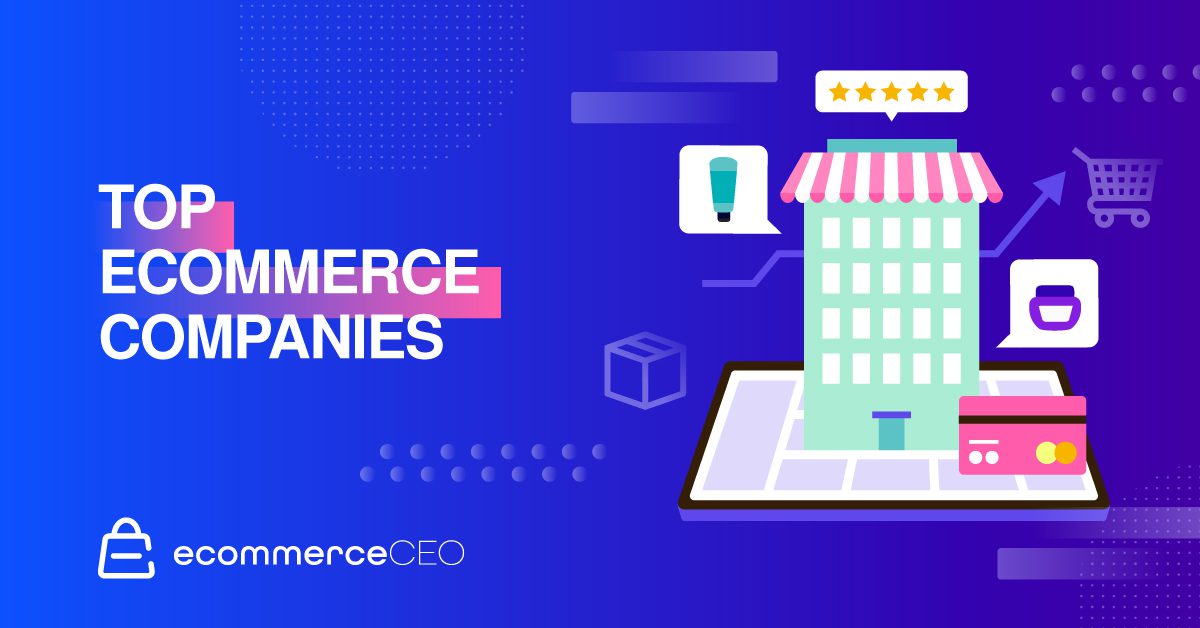
Before diving in, let’s break down the different types of ecommerce companies. A business may fall into one or more categories simultaneously, so understanding the type (or types) is foundational.
Types of Ecommerce
The ecommerce industry is made up of not only different ecommerce online shopping sites and brands but also different types of ecommerce companies.
If you’re an end-user trying to order toilet paper on Amazon or the largest electronics retailer trying to order parts for your products, the type of ecommerce company you need will vary, as will sales cycles, costs, and more.
Below is a summary of the different ecommerce business types.
B2B
B2B stands for business to business. This type of ecommerce company has a customer base made up of other businesses that may keep the products or services directly or resell them to another consumer.
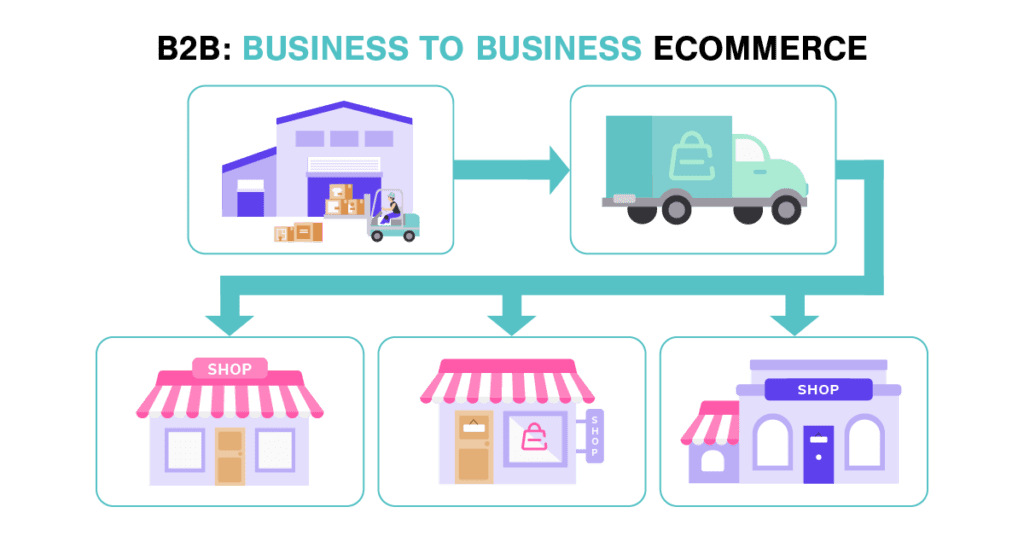
Like the electronics example above, companies can place online orders for any items they need to help their companies run, whether it’s bulk products for their operations and staff or items they require to create their own products.
As you might expect, the nature of B2B results in higher order values (in costs and/or unit counts). And in most cases, a longer sales cycle than an individual ordering one final product. In fact, B2B companies don’t typically sell to an end user, such as an individual looking for one item.
The nature of ecommerce has allowed progressive B2B companies to move online and replace outdated, bulky catalogs or paper order sheets. This move provides other benefits, such as improved marketing efforts and increased organic (SEO) traffic for businesses that have invested in B2B ecommerce.
B2C
B2C stands for business to consumer. This type of ecommerce company sells consumer goods, digital downloads, and physical products directly to the end user. If you shop for anything from a couch to a dog bed to your favorite jeans, you’ve participated in a B2C sale.

From small businesses selling handmade items to an ecommerce giant with a huge online presence, B2C means access to the consumer.
Unlike the large orders that accompany B2B, B2C can be a single item of low value. And the sales cycle might be under a minute. In today’s ecommerce environment, if you see an item you like online, you can have it delivered within an hour in some cases.
As a result of the quick sales cycle, individuals spend less time with a business, and recurring orders tend to be fewer than B2B transactions. B2C companies often invest in efforts to stay in front of their consumers, with remarketing efforts that continue after an initial sale.
C2B
C2B stands for consumer to business. This type of ecommerce may not be as familiar to the average person, and it doesn’t necessarily require an e-commerce website.

C2B means that a consumer creates value for a business, so a good example is an influencer or blogger with an online presence that utilizes affiliate links to products. Instead of an ecommerce website with products, you may be reading a recipe from your favorite blogger and want to purchase the secret spice or flour they recommend. Once you click the link, you are directed to the B2C site that sells the product, and once you finalize that purchase, you’ve just participated in a C2B exchange.
C2C
C2C stands for consumer to consumer. While the first consumer may not have a physical location or ecommerce website, they can participate in online sales through other ecommerce marketplaces.
Good examples of online retailers that support C2C sales are Craigslist, Facebook Marketplace, and eBay. On these sites, one individual can list an item for sale and be connected directly with the consumer on the other end that wants to buy.
While this may not be a traditional model (you don’t necessarily need digital marketing or a business plan to sell one kitchen table), this category is growing and reaching significant sales volumes.
B2B2C
B2B2C stands for business to business to consumer. The first company sells a product or service to another company that, in turn, sells it to the consumer. The consumer knows they are buying from the original company (unlike white label scenarios) but chooses to buy from the second business for convenience, price, or other factors.
A great example of B2B2C is UberEats. The consumer is ordering food from a company and understands the product will be from said company, but the transaction itself is going through the delivery company.
Top Ecommerce Companies
Now that we’ve covered the basics of ecommerce types let’s jump into our list of the top ecommerce companies in the world.
First up in our list of online players are marketplaces, which have experienced rapid growth in the last few years. These companies have created a quality digital experience that makes shopping more fun and hassle-free than ever before.
Marketplaces
An online marketplace is an ecommerce company that brings together various products that may come from multiple companies, brands, shops, or people.
These marketplaces boast a strong online presence and attract business owners and consumers alike.
One key benefit of a marketplace is that there isn’t a limited range of products supported by one online shop and its inventory. This business model eliminates a source of frustration for consumers who want a one-stop shop and increases consumer and business prospects. With the advent of grocery delivery, online retailers and marketplaces have made a big name for themselves.
Amazon
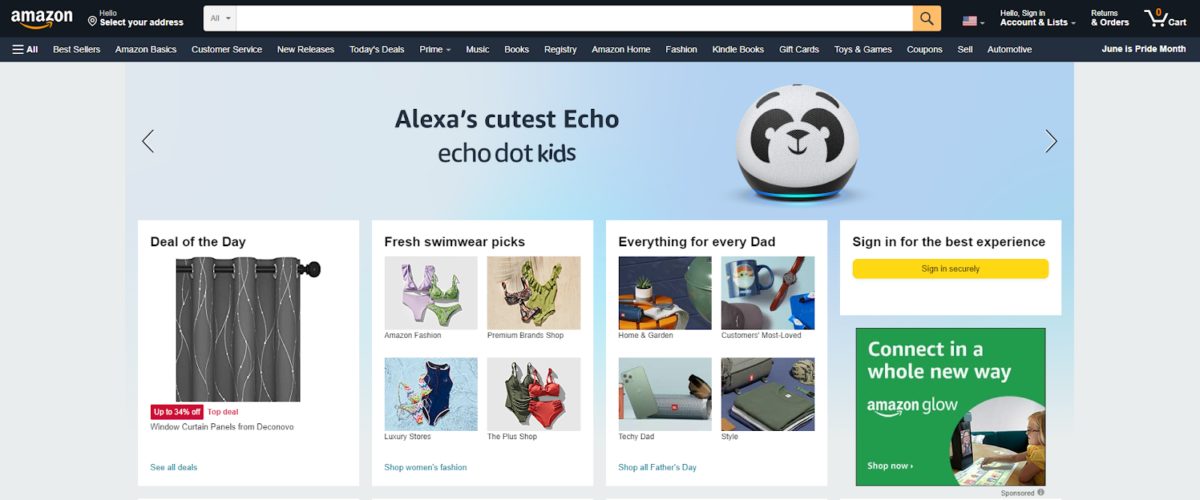
Amazon is one of the top ecommerce companies around, not only because of its massive network but also because of its successful membership program and value-added services for Prime members like Amazon Music, Amazon Prime, Amazon Web Services, and more.
Amazon started as an online bookstore but today is known for having a massive range of products thanks to its mighty network. Today, it’s a multinational technology company. From small items like buttons or markers to more oversized items like furniture, Amazon has more than twelve million items for consumers to search, sort quickly, and buy. And regardless of labor costs or cost hikes, Amazon’s size and strength ensure strong pricing for consumers.
Need even more extra features? Amazon developed the buy now button, which is considered one of the best advanced features of any ecommerce platform.
Amazon not only sets records for annual sales, it sees more shoppers in a month than most businesses see in a year, with more than 3.6 billion monthly visitors.
Alibaba Group
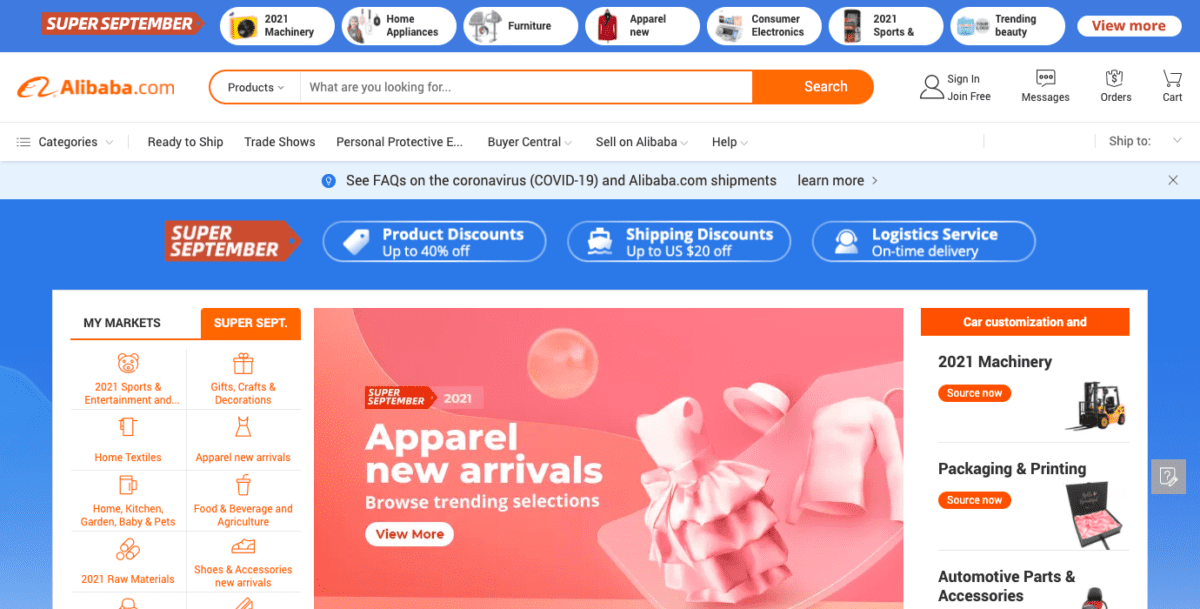
The Alibaba Group is a digital marketplace that owns multiple ecommerce sites like alibaba.com and aliexpress. This ecommerce company is great at connecting consumers and merchants. But as one of the largest ecommerce companies, Alibaba didn’t stop there.
In addition to the marketplace, the Alibaba ecosystem expanded to offer digital media options, digital downloads, cloud computing, and more. That broader market capitalization has resulted in more than $100 billion in annual revenue.
Walmart
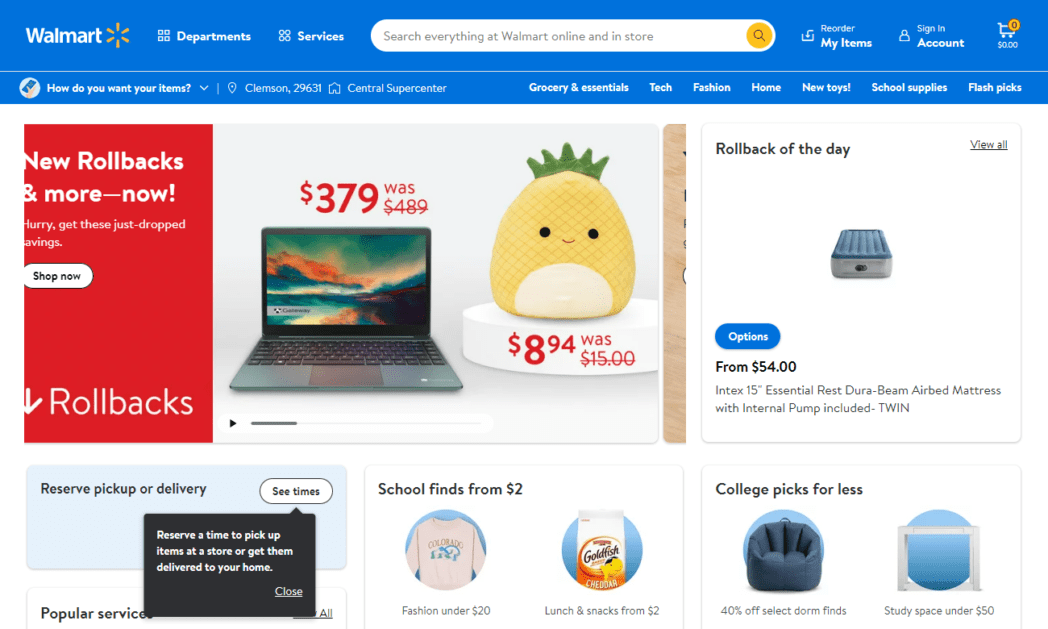
Walmart is a well-known brand for not only in-person but also online shopping. From household items to consumer electronics, Walmart is one of the world’s largest brick-and-mortar retailers and has a huge market share in ecommerce.
In addition to the recognizable products you’d find at Walmart’s physical locations, the company created Walmart Marketplace, which it describes as “a curated community of respected, professional sellers who offer only top-quality, authentic products and best-in-class customer service.”
This marketplace option expands consumers’ product availability through Walmart, which still focuses on cost savings.
Target

Like Walmart, Target Corporation is a recognizable brand that has become well-loved by many households over the past decade and beyond.
Target focuses on creating unique in-store and online customer experiences, bringing in specialty designer collections and displays like Hearth & Hand™ with Magnolia from Chip and Joanna Gaines. The in-store display brings together a unique retail experience that feels like a consumer is walking through another market within the main warehouse.
Target expanded its online business by creating the Target Marketplace. While this broadens the search results for options online, the marketplace is currently by invitation only.
According to experts, Target will likely continue to use the marketplace to support its products rather than shift to a marketplace model. So rather than lose sales to a competitor for a product Target doesn’t stock directly, its model is to supplement the product category and keep the consumer for itself.
eBay
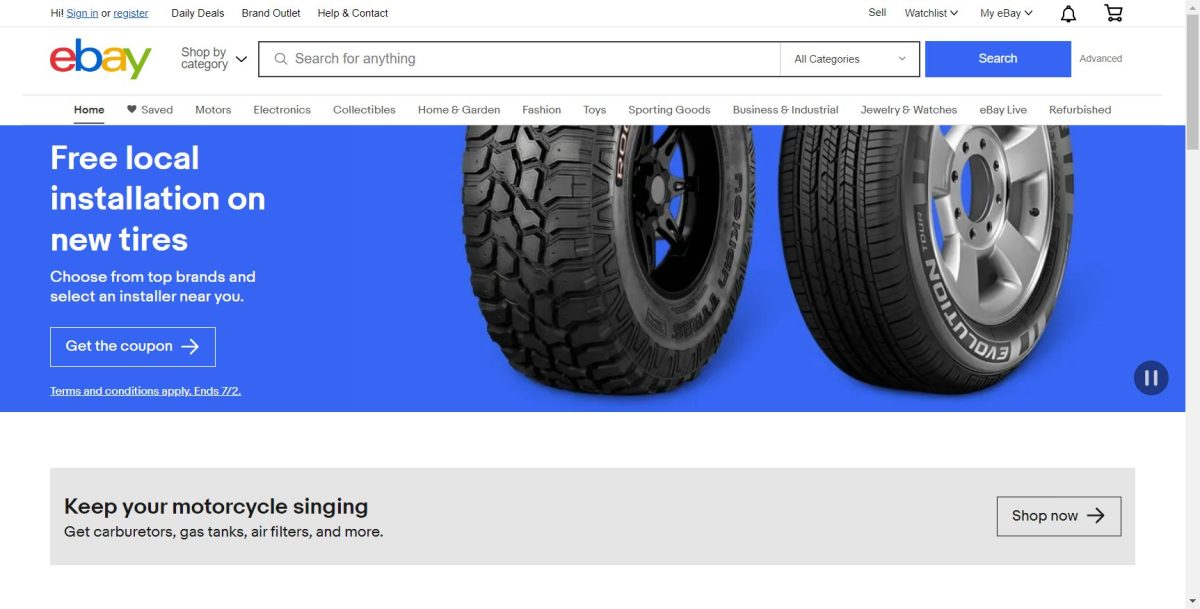
When it comes to marketplaces, eBay was one of the originals.
Web traffic data shows more than 550 million visitors flock to this online store every month. And unlike Walmart and Target, eBay relies on the online retailers (individual or otherwise) that join the digital platform.
Each consumer can sell one core product or create a store. Sellers are also able to set custom pricing, which helps maintain competitive options for consumers.
EBay’s online marketplace diversity allows for new and used item sales and B2C and C2C exchanges. Looking for that lunchbox you had in elementary school? Or a used car with less than 20,000 miles? No problem – eBay is home to both of those items and everything in between.
In addition, a robust search engine enables consumers to find what they want, whether in the US, Latin America, or another in the 175+ countries where eBay is used. Sort by price, distance, shipping costs, and more to easily navigate the more than 1.5 billion listings.
Rakuten
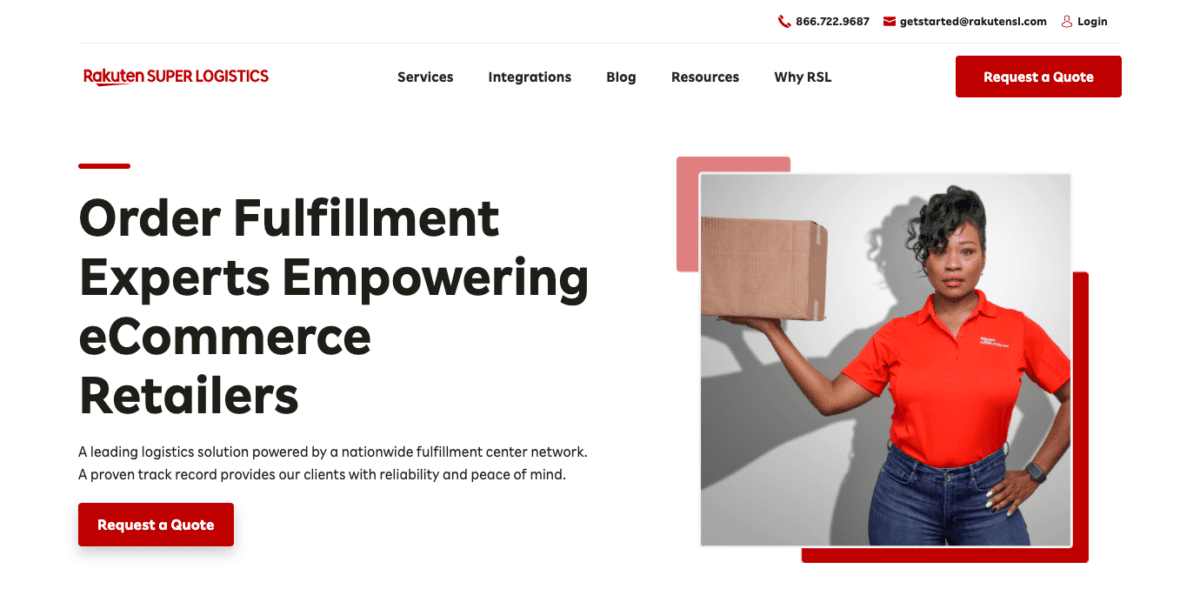
Rakuten is Japan’s largest online marketplace, with annual sales that exceed $5 billion, making it one of the top ecommerce companies.
Rakuten’s online retail platform connects businesses with consumers for all sorts of items, from pet supplies and groceries to mobile devices. More than 40 million visits occur to this marketplace in any given month.
Etsy

One of the largest ecommerce companies is Etsy, which features handmade items as its core product or value.
While you can find anything on a platform like Amazon or Rakuten, you will see more exclusive items on the Etsy shop as each seller goes through a rigorous process to confirm items sold are handmade (or vintage). This USP heavily supports small businesses throughout the world, as a consumer in the US can search quickly for the best product from local artists or those across the globe. You can get handcrafted products from home goods to fashion items – Etsy is the perfect place for finding one-of-a-kind items.
Etsy shop (and the Etsy app) has over 400 million visitors per month, making it one of the top ecommerce companies with a marketplace.
Facebook Marketplace

While Facebook is known for its social connection and as one of the premier tech companies thanks to the parent company (now Meta), there is more to the platform.
Facebook features Facebook Marketplace, an integrated online shopping platform that allows consumers to sell items to other users. Instead of Google shopping, you can simply hop onto the mobile apps offered by Facebook and search for what you want, whether an individual item or from a Facebook shop.
Another great feature of this marketplace is the ability to search for local items (and avoid shipping or delivery fees). This feature is similar to options on eBay or Craigslist and makes the social media giant one of the biggest ecommerce companies. And unlike eBay and Etsy, with more steps to set up a selling profile on Facebook Marketplace, any existing Facebook user can upload a product in a matter of minutes and manage inquiries through the integrated messenger.
Software
Another huge portion of the ecommerce market share comes from software ecommerce platforms.
These software companies are typically in the cloud (avoiding challenges like delivery delays and disrupted supply chains) and support ecommerce companies with a platform from which to build a website.
Shopify
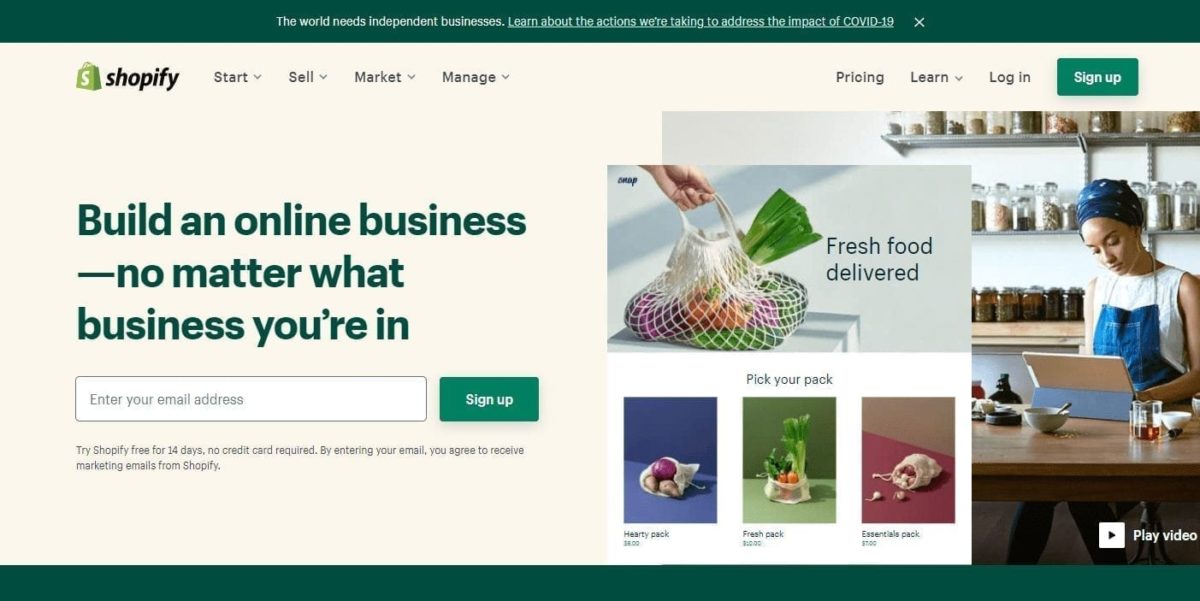
In the world of ecommerce, Shopify is a well-known player. Shopify is based in Ottawa, Ontario, and is a platform that supports ecommerce stores and POS systems.
Shopify offers a robust solution that helps business owners manage everything from their online presence to inventory, shipping, and delivery. And Shopify easily integrates with other platforms to increase the ability for digital advertising or paid searches. Shopify users can list one product and, with a couple of clicks, connect that product for sale through other accounts like Instagram, Amazon, Facebook, and more.
While you may not be able to create sophisticated designs easily, Shopify is a go-to ecommerce platform for everyone from mom-and-pop shops to some of the largest retail chains. And thanks to the hundreds of templates for free (or purchase), consumers may not get design sophistication, but they can still create something to represent the brand at a high level.
Wix
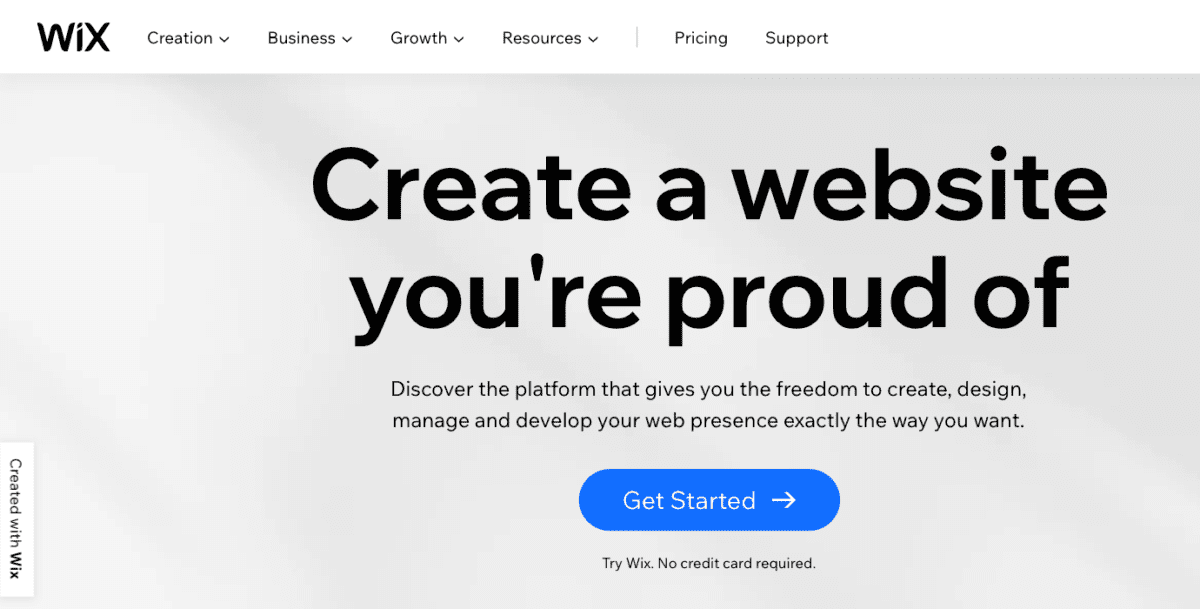
Wix is another solid platform that brings a lot to the table for companies just getting started in ecommerce. Wix ecommerce is known for being incredibly easy to use, especially for beginners, and its website builder comes with some basic ecommerce tools.
While more sophisticated businesses might choose Shopify (and its advanced features), Wix ecommerce boasts more than 200 million users, clearly communicating its value.
BigCommerce
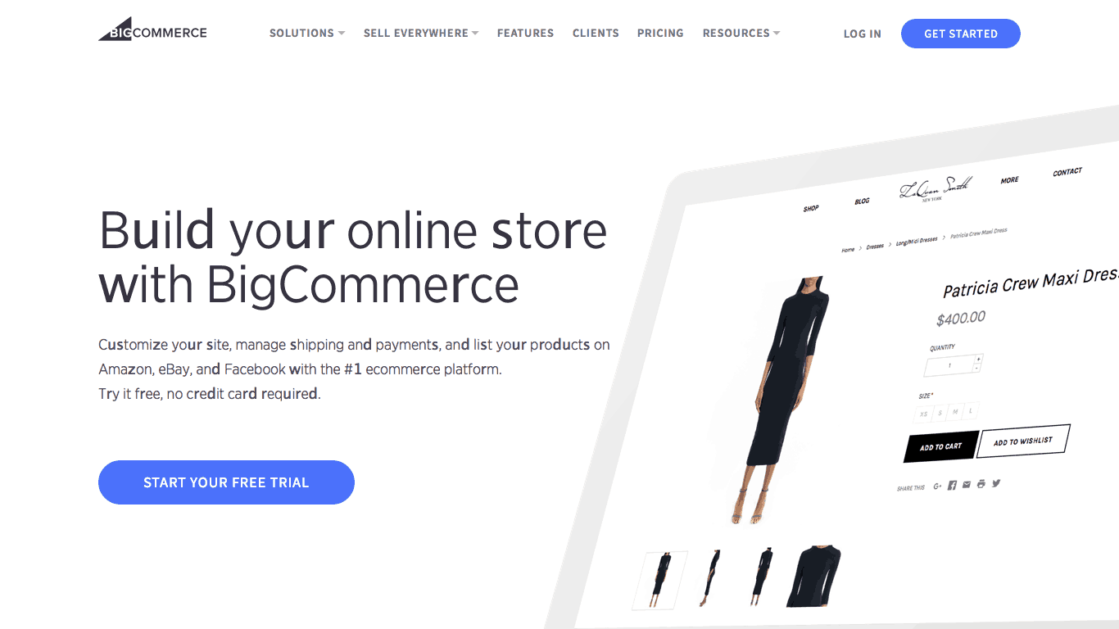
BigCommerce claims to be the “most trusted B2C and B2B commerce solution provider.”
This ecommerce solution was started in 2009 and offers a combination of website builder, a focus on SEO (search engine optimization), hosting, and even security.
While BigCommerce may not be the largest e-commerce option (with 60k plus online stores), it is certainly one of the top ecommerce companies we’ve reviewed. Proponents of this platform point to the integrated features that come standard (saving costs) and the scalability that supports growth easily.
Adobe Commerce
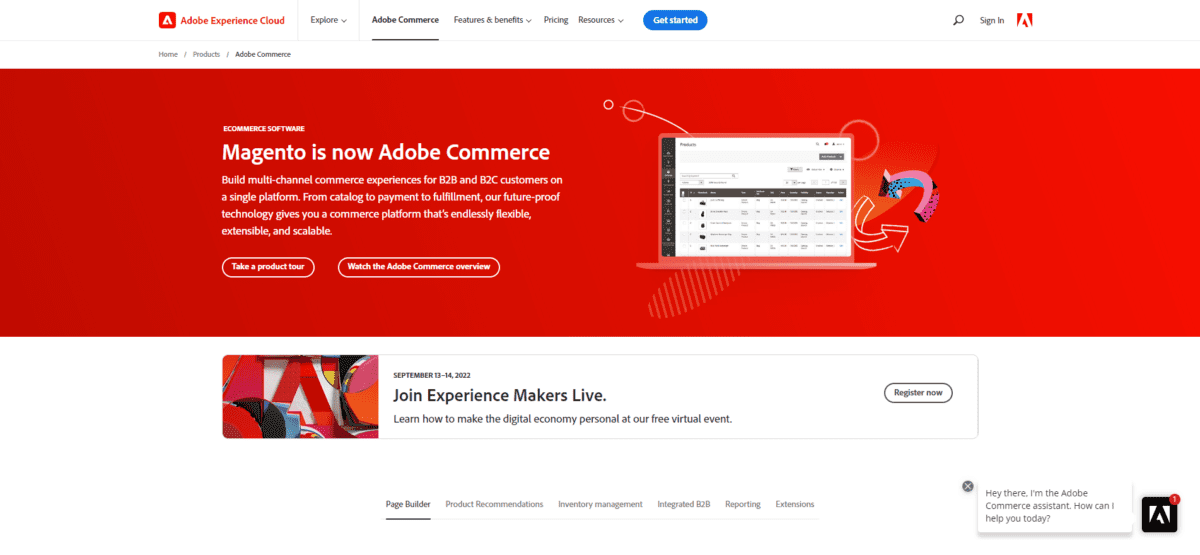
For those familiar with ecommerce companies, you may recognize the name Magento but they rebranded as Adobe Commerce.
Big brands like Columbia.com use Adobe Commerce, which confirms the platform’s ability to handle most traffic, regardless of the company size.
Adobe Commerce does it all and claims that “whether you’re a B2B ready to go direct to consumer (D2C) or a B2C managing several brands in 10 different languages,” it can help you manage multiple sales channels and brands around the world with just one platform.
WooCommerce
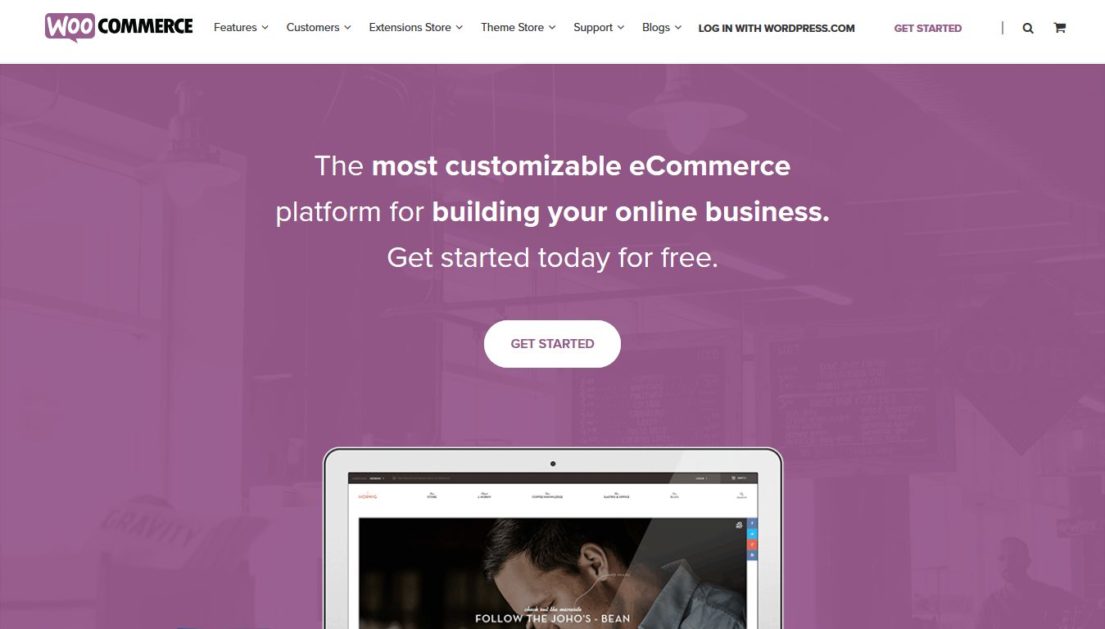
For sites built utilizing WordPress, WooCommerce provides an invaluable ecommerce option.
Over the last decade, this open-source plugin has grown in use thanks to its intuitive design, customization options, and integration with other plugins. It offers robust SEO support both internally and thanks to integrations with other tools.
Almost 4 million sites utilize WooCommerce, including large companies like Forbes.com.
Prestashop
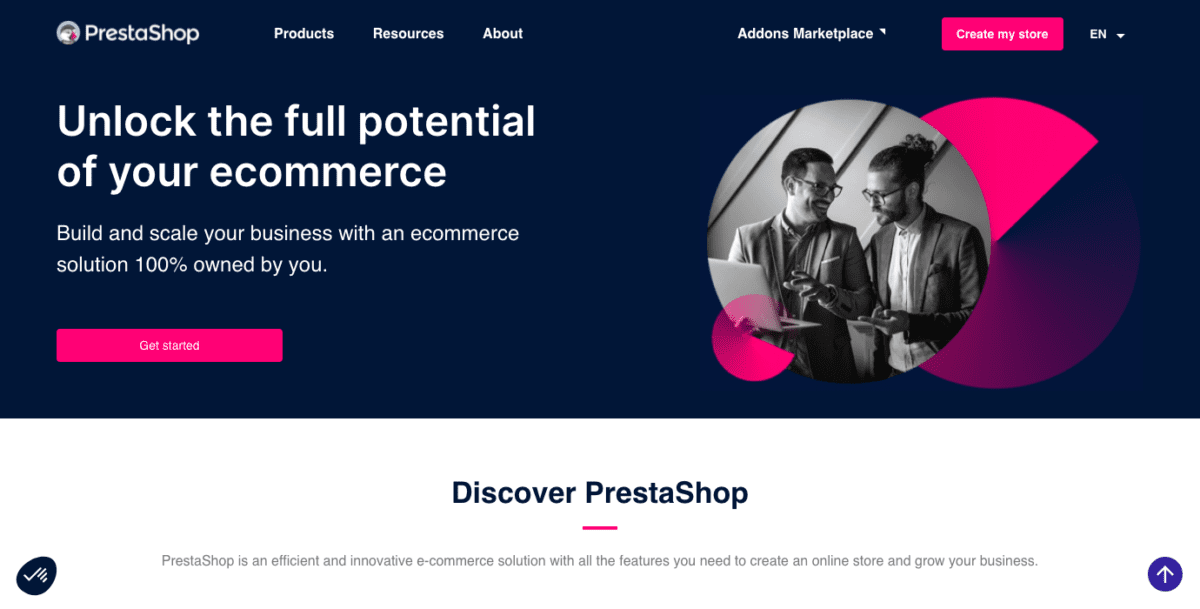
Prestashop is an ecommerce option written in the PHP programming language and published as an open-source platform.
The open-source nature of Prestashop makes it an excellent option for businesses that want to tap into that flexibility. It also is a great option for small to medium size companies focused on the budget since the platform is 100% free.
According to its website, Prestashop boasts approximately 300k users.
Squarespace ecommerce

Squarespace is an easy-to-use ecommerce solution that allows even the most inexperienced user to begin creating an ecommerce website.
The Squarespace ecommerce solution utilizes clean, templated options, which means physical products stay front and center. It’s a favorite for many ecommerce brands and non-e-commerce brands alike.
Squarespace also keeps most backend items clean and simple, with easy-to-follow options to add SEO and marketing details on the backend.
HBO is reported to utilize SquareSpace in its tech stack.
Credit Card Companies
From the world’s largest retailer to the mom-and-pop stores that create their first website, credit card companies play a considerable role in the ecommerce space. After all, ecommerce eliminates the ability for consumers to pay cash – and losing sales because of clunky or unsafe payment options isn’t an option for most businesses.
These companies are large enough to be on the stock market but adaptable enough to be necessary for even the smallest business.
Visa
Visa is a global giant in the ecommerce and physical space, serving more than 200 countries from Latin America and South America to Spain. Visa is a widely recognized (and accepted brand). The company claims to process almost 30 million daily transactions, demonstrating this big business’s incredible strength and size.
When you walk into a store, you can use anything from digital wallets to cash to a plastic card. But many of those options go away online, making the credit card choice an integral part of the ecommerce experience.
Mastercard

Mastercard currently holds the honor of being accepted in most countries and comes in close behind Visa with approximately $18 billion in revenue annually (to Visa’s $24 billion).
Mastercard works with ecommerce companies to easily integrate with websites as a payment processor and provide desired online retail features like enhanced security.
Citibank
Citibank supports ecommerce companies with features like security and easy integration. The focus has been on solving problems for ecommerce companies and planning for needs like scalability and growth.
It also touts its ability to seamlessly handle multiple currencies for companies that may be based somewhere like San Francisco but operate in other countries.
Chase

Chase easily integrates with popular software choices (such as Shopify and WooCommerce).
Chase utilizes the payment gateway, Authorize.net and focuses on ensuring the least downtime for businesses that want to begin accepting payments online.
American Express
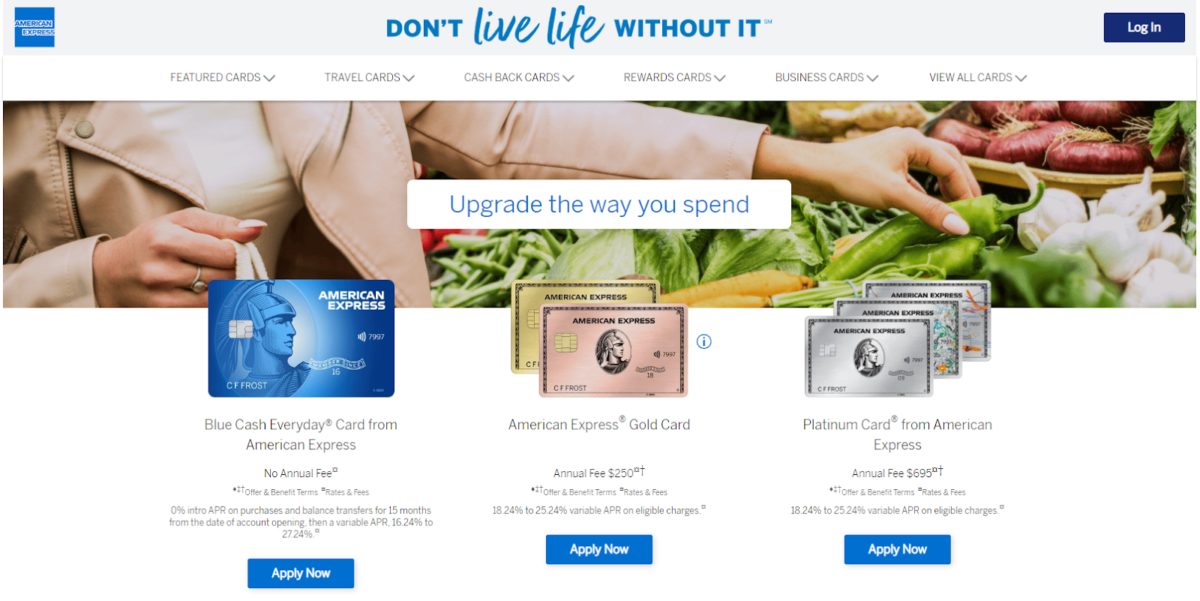
American Express boasts more than $43 billion in annual revenues, making its market value one of the highest on our list of credit cards.
However, American Express isn’t as widely accepted online as some of its competitors, and that is most often due to the higher merchant fees it charges. Still, e-commerce companies that can afford to accept American Express typically find it provides exceptional service.
Capital One
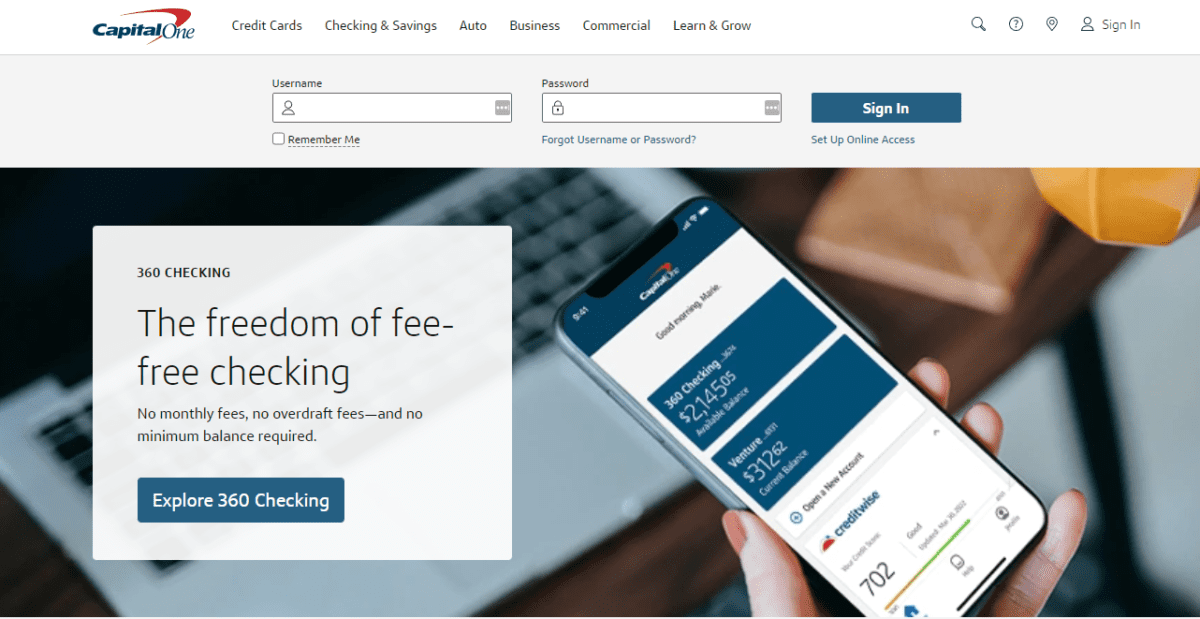
The company, known for its slogan, “What’s in your wallet,” is also known for being accepted almost anywhere.
Capital One uses Worldpay for merchant services and focuses on providing a wide variety of payment options for consumers and flexibility to deliver collected funds to the ecommerce companies that use them quickly.
Ecommerce Outlook
The global ecommerce sales worldwide will grow by 8.9% in 2023 according to Insider Intelligence. Global ecommerce sales are being driven by a number of factors, including the rise of mobile commerce, the growth of social media, and the increasing popularity of online shopping.
The rise of mobile commerce is a key driver of global ecommerce growth. As more and more people switch to smartphones and tablets, they are increasingly using these devices to shop online. In fact, global mobile ecommerce sales are expected to grow even further to 511.8 billion in 2023, 604.5 billion in 2024 and 710.42 billion in 2025 according to Forbes.
Social media is another key driver of global ecommerce growth. Social media platforms provide a convenient way for people to discover new products and learn about the experiences of others. As a result, social media is playing an increasingly important role in online shopping. The global social media commerce market size is expected to hit $1.3 trillion in 2023.
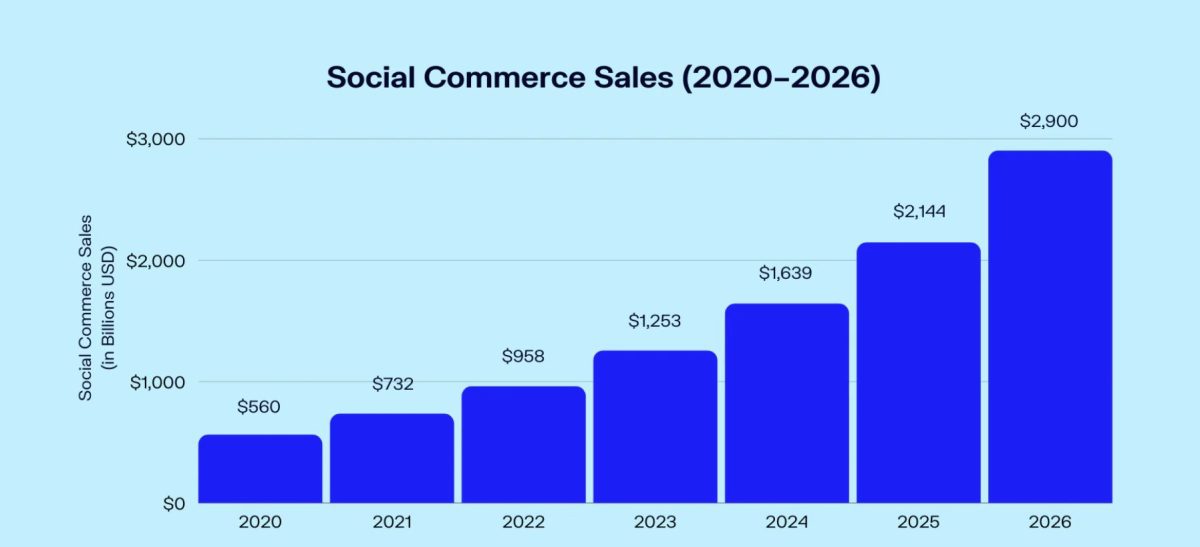
Source: Influencer Marketing Hub
The increasing popularity of online shopping is another contributor to global ecommerce growth. More and more people are choosing to shop online because it is convenient and it offers a wide selection of products. In addition, online shoppers often enjoy competitive prices and great deals.
Our key takeaway is that ecommerce is on the rise, and the top players are using everything to reach a broader market, from digital marketing to a focus on SEO to artificial intelligence and extra features that make their platform (and ecommerce websites) desirable.
A business has more options as software and credit card companies fight to stay competitive, so choosing the right partner can come down to understanding each offering and choosing the best solution for the need and budget.
A Final Look at the Biggest Ecommerce Companies
And there you have it – the top ecommerce companies to watch in 2023. We’ve covered everything from the stores (or marketplaces) to the supporting software companies and credit card merchants that make up the broader market.
Whether you’re watching these ecommerce companies for stock market performance and market cap data – or just want to know more about demographic trends, who to use, and why – we’re here to help.
We’re your personal Google assistant here to help unpack the best ecommerce companies for 2023.









